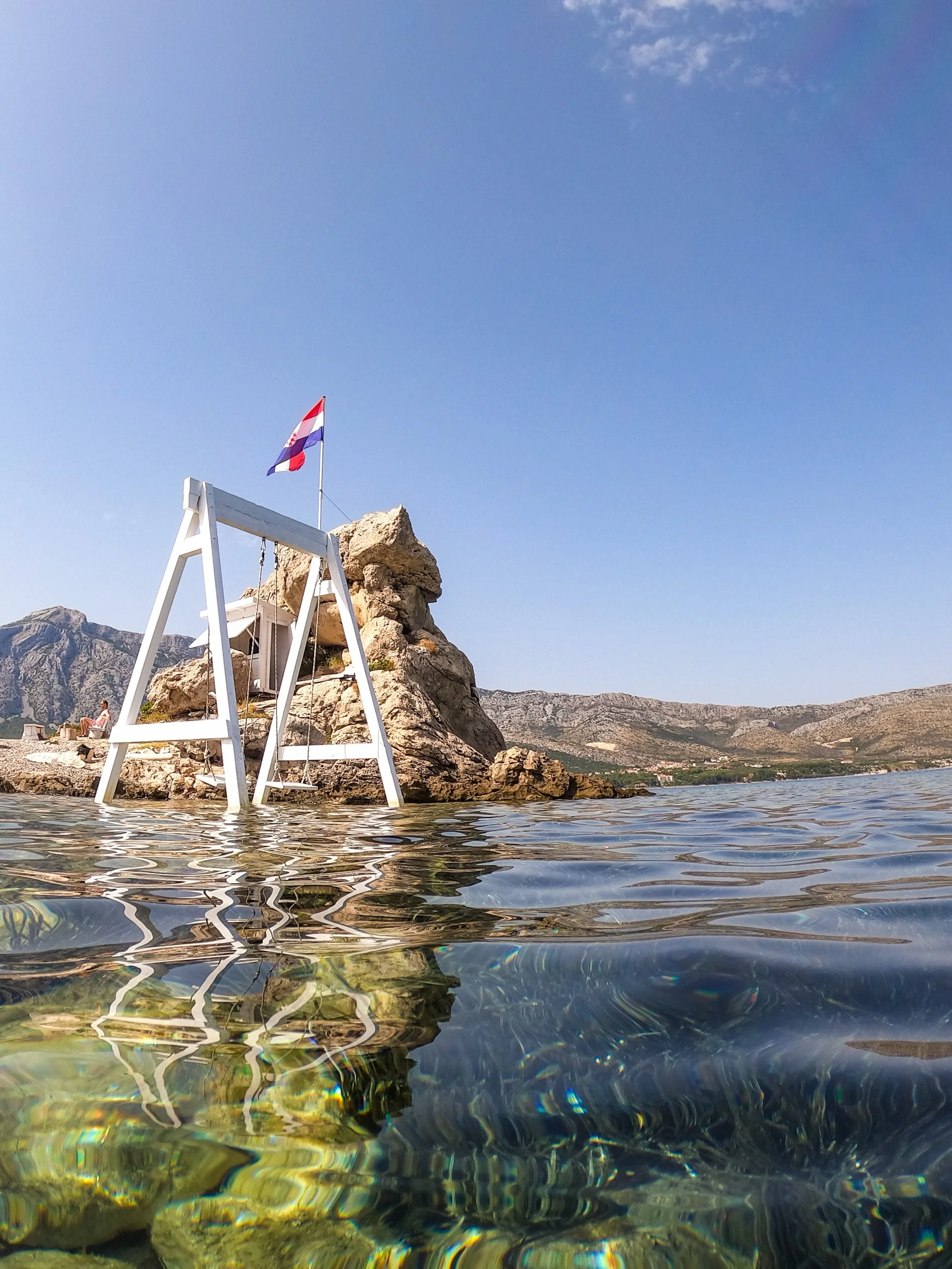Episode 154
Sretno ljeto, prijatelji!
Let’s keep the summer vibes rolling with a third installment of the Croatian Summer Destination Series!
The beautiful island of Brač is a wonderful place to visit.
In this lesson, we’ll learn how to say some of the sights and highlights of this delightful island.
Lesson
Island - otok
Ferry - trajekt
Beach - plaža
Stone - stijena
Olive Oil - masleno ulje
Vidova gora is the highest peak - Vidova gora je najviši vrh.
Zlatni rat is a very beautiful beach - Zlatni rat je prekrasna plaža.
Bol is a well-known tourist spot on the Adriatic. - Bol je poznato turističko mjesto na Jadranu.
Super Slatko Report
DJ Moe maintains the theme of Otok Brač with another insightful edition of the Super Slatko Report. What’s popular on the island? What’s it known for all around the world? Grab your beach towels and join us to find out!
If you’ve ever dreamed of visiting a Croatian island that feels like it was carved with intention—rugged, sun-drenched, and quietly legendary—then allow me to introduce you to Brač. With its soaring peaks, white stone, ancient roots, and that famous horn of a beach jutting into turquoise seas. Pull up a chair, hang out for a few and you’ll learn why this island has been both a prize and a refuge for centuries.
Brač is the third largest island in the Adriatic Sea and the largest in central Dalmatia, just a short ferry ride south of Split. It spans about 395 square kilometers and is home to around 14,000 people. Its most striking geographic feature is Vidova Gora, the highest peak among all Croatian islands, rising 778 meters! (2,552 feet) above sea level. From its summit, on a clear day, you can see as far as Italy. Brač sits between the islands of Hvar and Šolta, and its proximity to the mainland makes it an accessible but still relatively peaceful retreat. The island’s economy has historically leaned on stone quarrying, olive oil production, and fishing, though tourism has grown to become a major contributor in recent decades.
Geographically, Brač is full of contrasts—arid hillsides and deep coves, limestone cliffs and pine-covered valleys. But the most photographed site is undoubtedly Zlatni Rat, or the Golden Horn, a narrow beach of gleaming white pebbles that shifts shape with the tides and winds, pointing like a compass into the sea near the town of Bol. It’s considered one of the most beautiful beaches in Croatia, if not the entire Mediterranean, if not the world. As you might remember from Episode 46, Red Bull did/does a thing there, worth a google. Moving inland, ancient stone terraces and olive groves define the landscape, while caves and karst formations hint at a geologic history millions of years in the making. The sea around Brač is especially clear and calm, making it a haven for divers and swimmers alike.
The first known settlers of Brač were the Illyrians, an ancient people who inhabited the western Balkans long before the arrival of the Romans. They settled the island as early as the Bronze Age (approximately 3300BC), drawn by its natural resources, fresh water springs, and strategic location. Traces of their time remain in the form of gradine, or dry stone hill forts, scattered across the island. Later, the Romans established estates and stone quarries, and remnants of Roman villas, mosaics, and cisterns can still be found, particularly around the towns of Škrip and Supetar. Škrip, in fact, is the oldest continuously inhabited settlement on the island and now houses the Island of Brač Museum.
Today, Brač is perhaps most renowned for its stone. The island’s white limestone has been prized for centuries; it was used in the construction of Diocletian’s Palace in Split. The tradition of stonemasonry is still alive today, most notably in the town of Pučišća, where a historic stonemasonry school continues to train artisans. Olive oil from Brač is another local treasure—thick, peppery, and rich—pressed from native oblica olives. Culturally, the island is known for strong ties to Catholic traditions, klapa singing, summer festivals, quiet and unhurried pace of daily life.
Brač is an island of layered identities: a rugged landscape shaped by wind and water, a history in stone, and its roots firmly planted in the islands culture. Whether you're drawn by the geography, the history, or simply the promise of olive groves and crystal-clear seas, this island has a quiet confidence that leaves a lasting impression. And for those looking to see a side of Croatia that blends authenticity with accessibility, Brač might just be your next stop as most of the ferries along the Dalmatian Coast offer hourly trips to and from the island. I have yet to make it there my self, but its on my list for sure.
And thats it for the Super Slatko Report.






